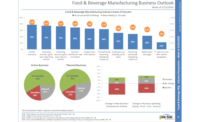Understanding the multiple facets of sustainability in the food industry




The term “sustainability” embodies a number of different meanings. According to the Oxford English dictionary, one definition refers to the “avoidance of the depletion of natural resources in order to maintain an ecological balance.” But sustainability does not just solely relate to environmentalism. It is also often perceived as comprised of three interrelated pillars—society, environment, and economy—or in other representations: people, planet, and profit. This multipronged approach represents an understanding that, in addition to natural resources, society also needs social and economic resources, and we should consider all facets in the short term—meeting our own needs now and in the longer term—without compromising the ability of future generations to meet their own needs.
The food industry is one key sector where sustainability has a significant impact. But how do marketers and manufacturers incorporate all facets of sustainability as a business focus?
Not all consumers look at sustainability through the same lens. NMI offers consumer insights for the LOHAS market (Lifestyles of Health and Sustainability). Since 2002, NMI has conducted an annual research study among 3,000 U.S. general population consumers, which provides a wealth of data regarding LOHAS-related attitudes and behaviors. NMI has developed a consumer segmentation of the general population, which identifies five distinct consumer segments:
- Naturalites, 24 percent of the population, personal health drive is greater than planetary health
- LOHAS, 22 percent of the population, personal and planetary health are priorities
- Conventionals, 21 percent of the population, who are practical and rational
- Drifters, 20 percent of the population, are “green followers”
- Unconcerneds, 13 percent of the population, less concerned about the environment and society
The 22 percent of U.S. adults (about 56 million people) classified as LOHAS consumers hold the strongest attitudes and behaviors regarding personal and planetary health. They are the heaviest users of healthy and “green” products and exert strong influence over others. Therefore, LOHAS consumers are a critical target for food and beverage companies when marketing healthy, environmentally friendly, and socially responsible products.
Understanding which attributes are the key purchase drivers for foods and beverages sheds light on how consumers perceive sustainability as it relates to the products they buy. Not surprisingly, taste, value, and nutrition top the list. A second tier of attributes focuses on more-conventional attributes, with the “greener” attributes falling into a third tier of drivers. However, many of the attributes showing the most growth are those that are environmentally friendly. For example, “no GMOs” has increased 32 percent from 2012, while the importance of “from farms that practice sustainable agriculture” has grown 52 percent during the same timeframe. While many of these factors potentially affect personal health (no pesticides, organic, etc.), it’s also notable is that they take into account the impact on planetary health, thus addressing both the “people” and “planet” prongs of the sustainability trifecta. In addition, it’s important to remember that these attitudes are significantly stronger among LOHAS consumers and others who place a much higher import on sustainability.
It is also important for manufacturers to bear in mind that there are multiple phases of a food product’s life cycle that have impact on consumers with regard to sustainability: pre, during, and post. All three are important and need consideration in terms of how a product is grown or processed (organically, using less water or energy, etc.), the health impact when eaten (no pesticides, no GMOs, etc.) and how it is disposed of post-use (recyclable or compostable packaging).
Beyond simply buying foods with sustainable attributes, many consumers believe it is important to align with companies that truly espouse these values. Consumers want to know not only what companies are doing with regard to their sustainability practices, but they want the companies they patronize to actively demonstrate their levels of responsibility and commitment.
The general population is increasingly interested in learning about various corporate practices relative to how companies address key environmental issues. Again, LOHAS consumers rise to the forefront as a group that is truly engaged in these efforts and for whom corporate responsibility is paramount.
Beyond the importance of simply “doing the right thing,” incorporating sustainability into corporate actions can have a positive effect on the bottom line. This is especially true for LOHAS consumers, 54 percent of whom state that they would be willing to pay 20 percent more for products made in an environmentally friendly and sustainable manner, compared to 26 percent of the general population.
Consumers are increasingly making decisions with an understanding of the effect they have on the health and sustainability of the world, its environment, and its people. As it relates to foods, sustainability reflects a desire to protect personal health, environmental health, and animal welfare. In the end, most consumers realize that a healthy body and a healthy environment go hand-in-hand. Food manufacturers should continue to take steps to integrate sustainable practices and offer choices that appeal to consumers’ desire for both personal and broader planetary health.
Looking for a reprint of this article?
From high-res PDFs to custom plaques, order your copy today!









